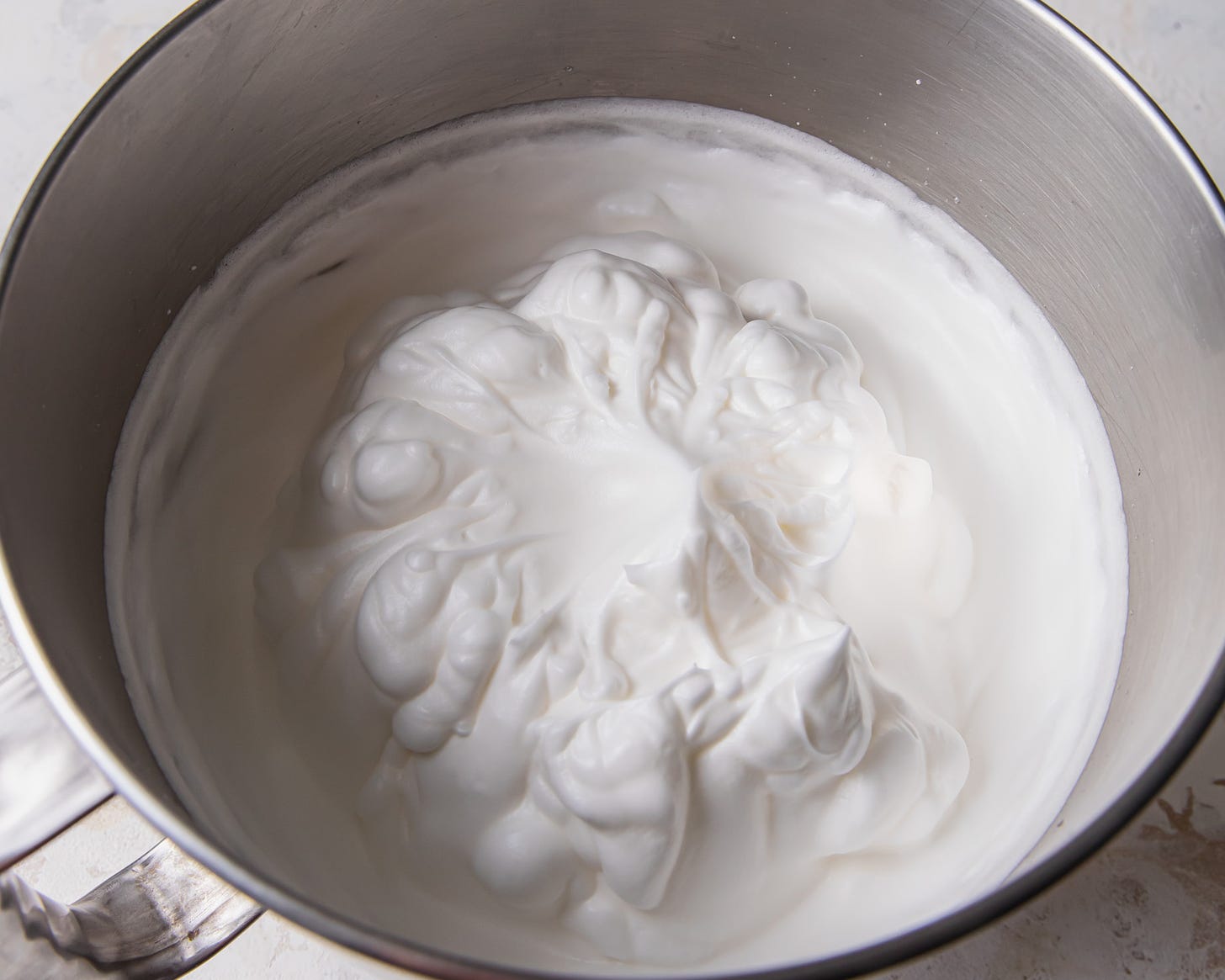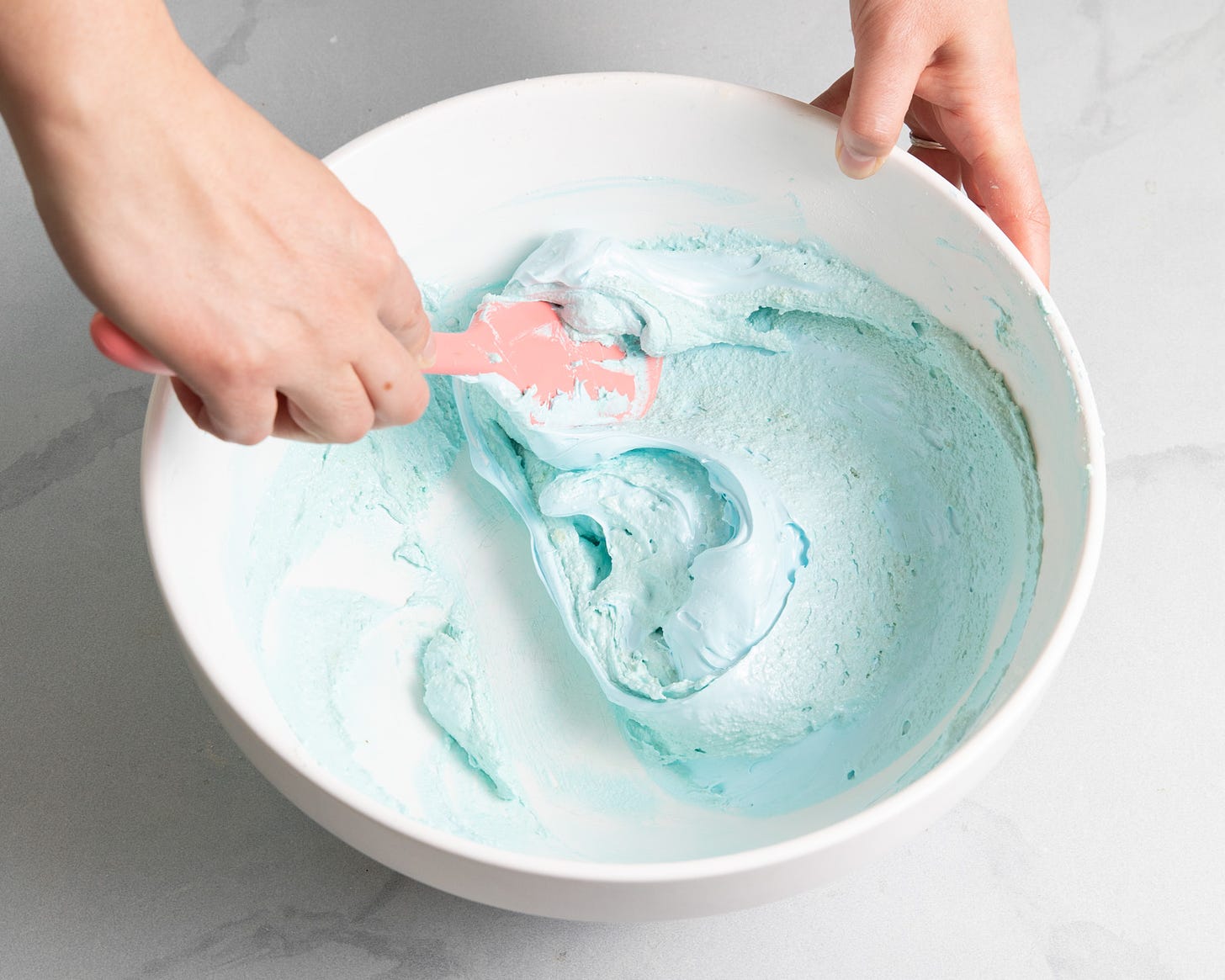Hi Bakers!
Summer is for sponge cake, and we’ve had quite a few go out in the newsletter lately. If you are like me, then thick frosting and dense pound cake feel too heavy for the heat. Growing up in North America, I’m more accustomed to butter and oil-based cakes. But lately, I’ve been rethinking sponge cakes and how simple and perfect they truly are.
See Chocolate Genoise Sponge Cake (black forest cake) and Hot Milk Sponge (chocolate raspberry charlotte).
Today, we are going on a deep dive into my favorite sponge hybrid - Chiffon Cake. Like other sponge cakes, it gets a mega lift from whipped egg whites. It is also moist and bouncy from the addition of oil and baking powder. Let’s take a look:
What is a Chiffon Cake?
A chiffon cake is a cross between a sponge cake and an oil cake. It is soft and pillowy from whipped egg whites but rich and tender from the addition of oil and fat laden egg yolks.
Where some sponge cakes are purposefully plain and in need of a flavored syrup, chiffon cake is moist, rich, and melt-in-your mouth tender. It is so springy that you can squish it with your hand and it will spring back.
Chiffon Cake vs Sponge Cake
So what's the difference between sponge cake and chiffon cake?
Sponge cakes or "foam" cakes are light and airy with an open texture that they get from whipped eggs. Sponge cake recipes can call for whole eggs or only the egg whites that are whipped up to a foam.
Often, the whipped eggs are the only ingredient used to lift and leaven sponge cakes - i.e. no baking powder or baking soda.
When making a chiffon cake, whipped egg whites are folded into the cake batter. The biggest difference between most other sponge cakes and chiffon cakes is that chiffon cakes have a significant amount of oil while others have little to no additional fat beyond egg yolks.
Chiffon cakes also include baking powder to ensure proper lift.
Chiffon cakes are the most forgiving cakes of the sponge family. They contain baking powder that acts like a safety net for insufficient egg whites.
That being said, it’s best to learn how to properly whip egg whites. The key to whipping up puffy clouds of egg whites is to start low and slow then gradually increase to high speed. Using the whisk attachment, begin mixing on low speed until tons of tiny air bubbles form.
Next, sprinkle in the cream of tartar and sugar (if using) while gradually increasing the speed to medium. After the eggs are completely opaque, turn the mixer up to medium-high speed.
Whip the egg whites until they are thick and billowy. When you stop the mixer and lift up the whisk, they should hold medium peaks.
Do not over-mix egg whites. If you mix too long, the egg whites will turn dry and begin to clump together. Not only are these types of egg whites less efficient at creating puffy cakes, they are much harder to fold into the batter and can lead to a collapsed cake structure.
Tips for Whipping Egg Whites
Whip egg whites in a clean bowl. It must be free from grease. Metal and glass bowls work best.
Add an acid. Cream of tartar, lemon juice, and vinegar help stabilize whipped egg whites and keep them from deflating too quickly.
Keep egg whites free from fat. This mostly means no drips of yolk, but also free from any grease or fat residues from the mixing bowl (see first tip) or whisk.
What’s the Deal with Tube Pans?
A tube pan is a type of cake pan that has a hollow tube in the center. Unlike a Bundt pan, those used for sponge cakes have removable bottoms and “feet” around the rim.
To keep from deflating, chiffon cakes are cooled upside down in their pans. If your pan doesn’t have feet, you can affix the pan on top of a wine bottle, or similar, to suspend it above the counter.
Unlike most other pans, do not grease the inside of a chiffon cake pan. During the baking process, we want the cake batter to climb up the sides of the pan for max height. Don’t worry about getting the cake out, that’s what the removable bottom is for.
Likewise, do not grease or line the bottom of the tube pan so that the cake doesn’t fall out while cooling.
If you don’t have a tube pan, you can bake a chiffon cake in a regular round pan. You can rig a system to cool them upside down if you’d like, but prepare for the cake to shrink a bit. Because a regular cake pan doesn’t have a removable bottom, I suggest lining it with parchment paper (but keep the sides un-greased). Just be mindful when cooling upside down.
A Mini Lesson on Folding
Folding as a cooking term means to gently combine two ingredients or mixtures with little agitation. If whisking means to stir vigorously, folding is the opposite.
This stirring technique is often used to combine things of different densities, like a thick almond batter with fluffy egg whites when making French macarons. Folding is also used to combine ingredients that are already whipped, like whipped cream, so that they are not deflated.
Use a "J" fold in a large bowl. To do so, take a large rubber spatula or large metal spoon to cut the mixture down the center. Next, scoop the mixture from the bottom of the bowl and flip it to the top making "J" motion. Rotate the bowl and repeat.
When folding mixtures with completely different texture and consistencies, it helps to temper them in. Start by adding about a third of the egg whites, then gradually add the rest in batches. This helps bridge the gap between the batter and egg whites without over mixing.
Now let’s get to this week’s recipe:
Keep reading with a 7-day free trial
Subscribe to Tessa Huff's Bake Club to keep reading this post and get 7 days of free access to the full post archives.








